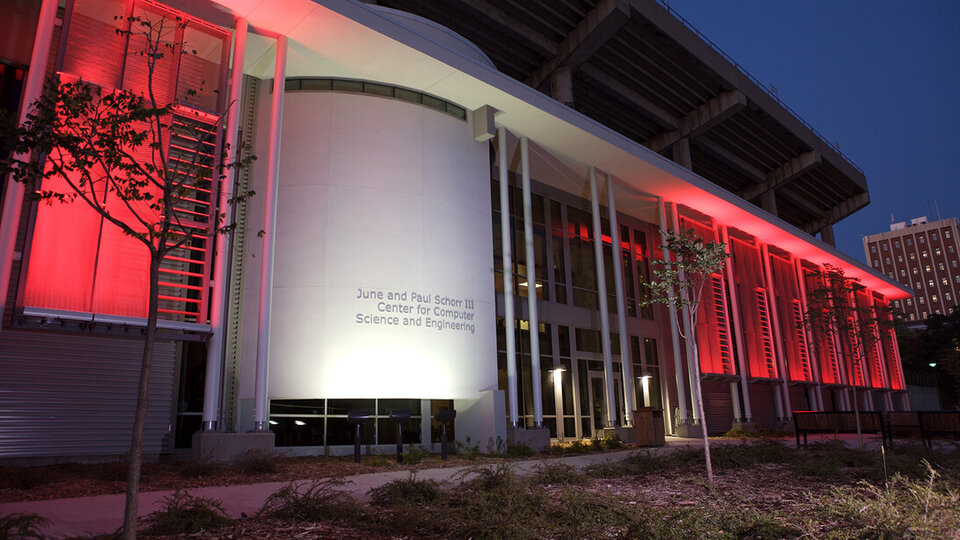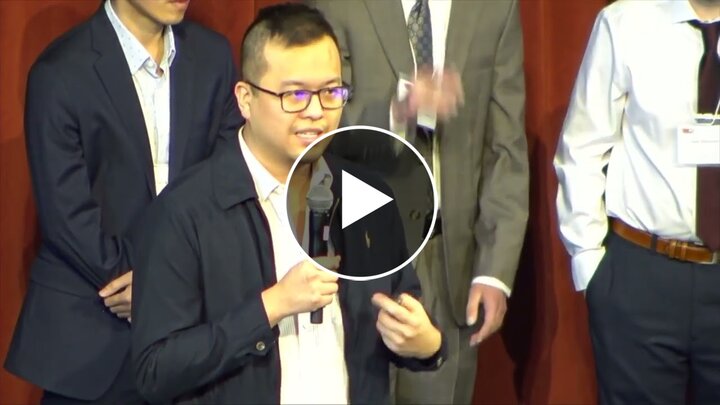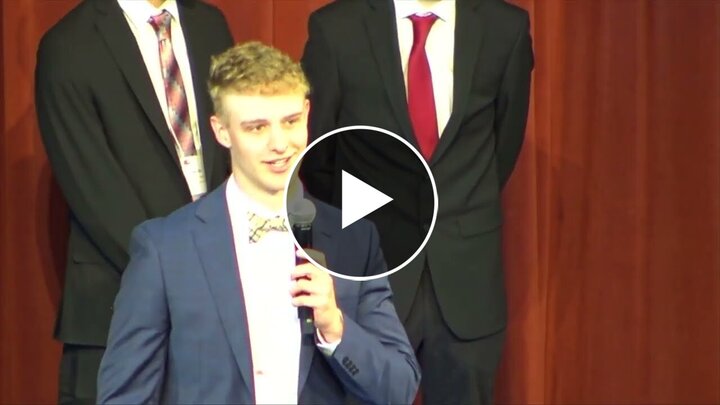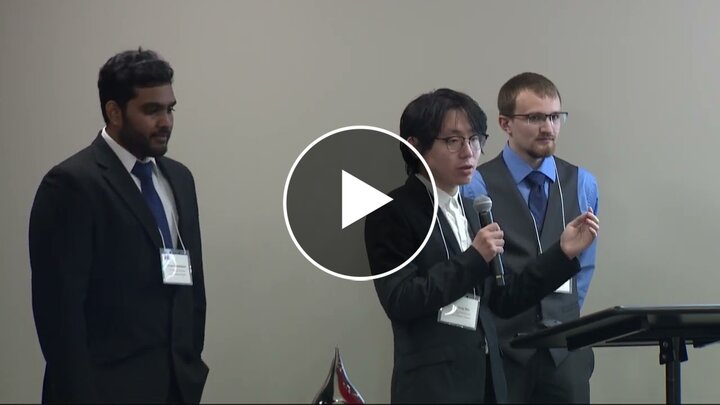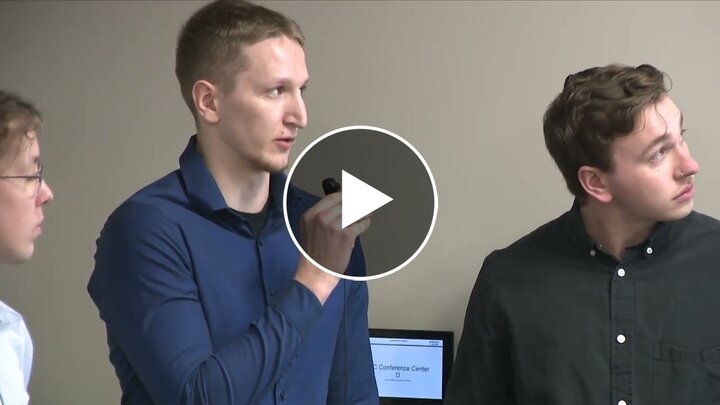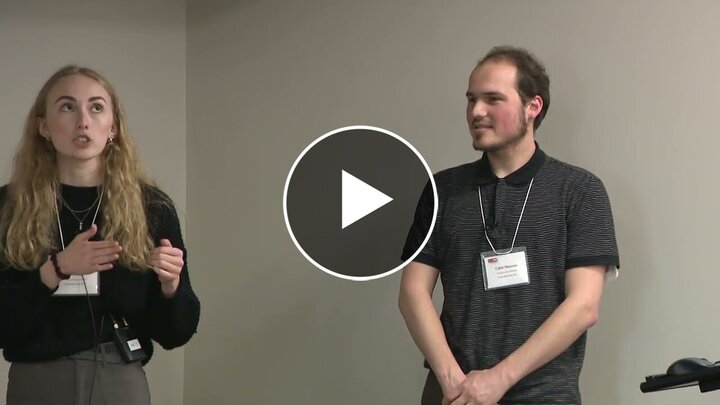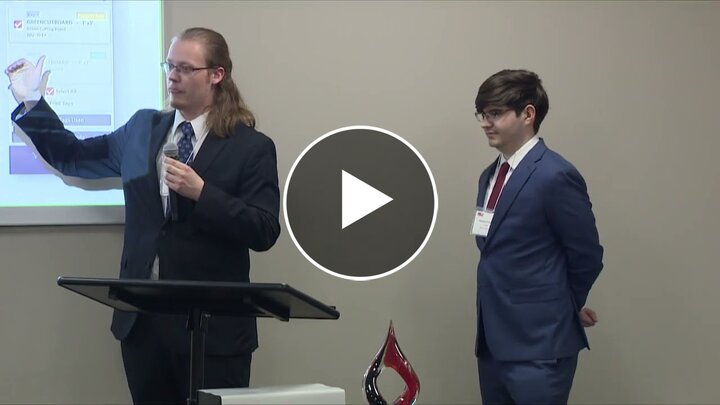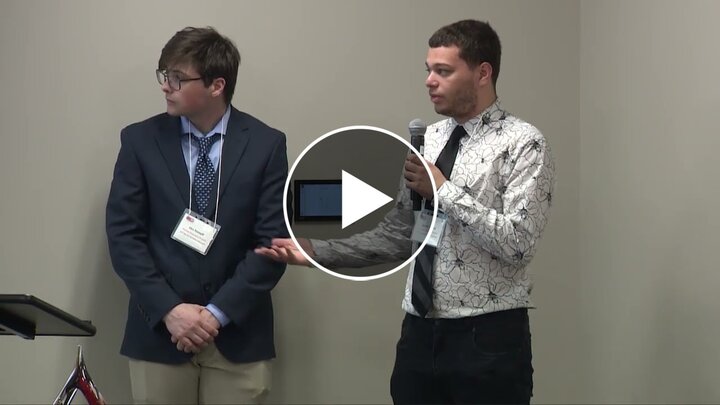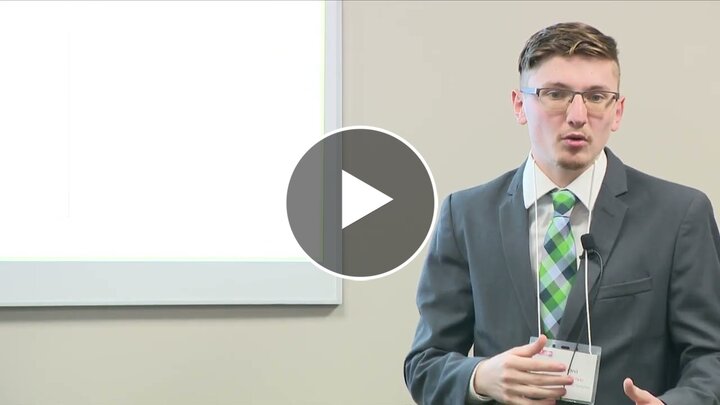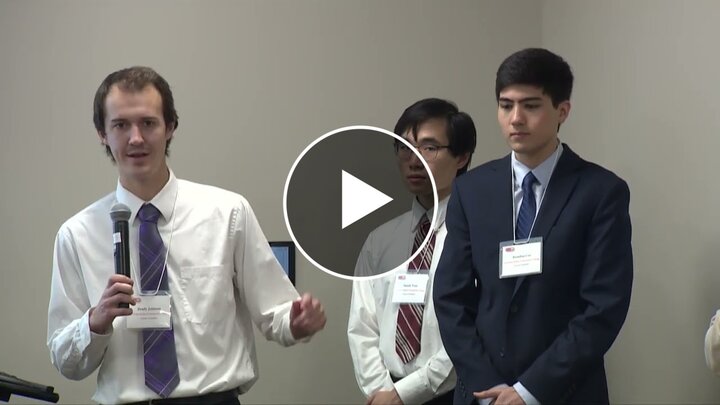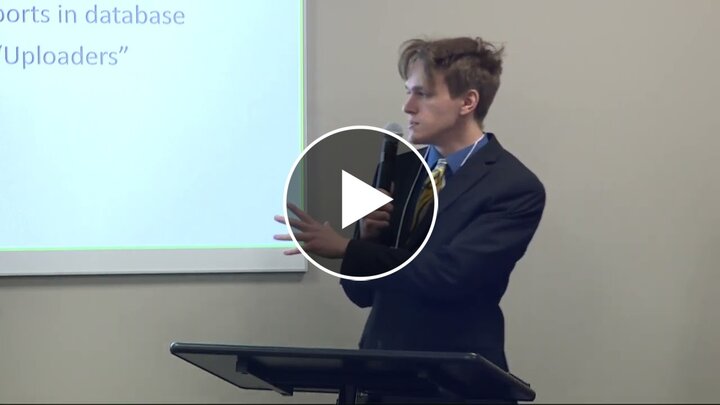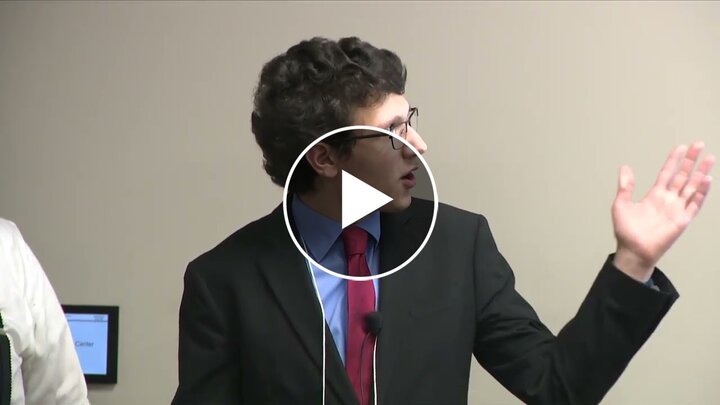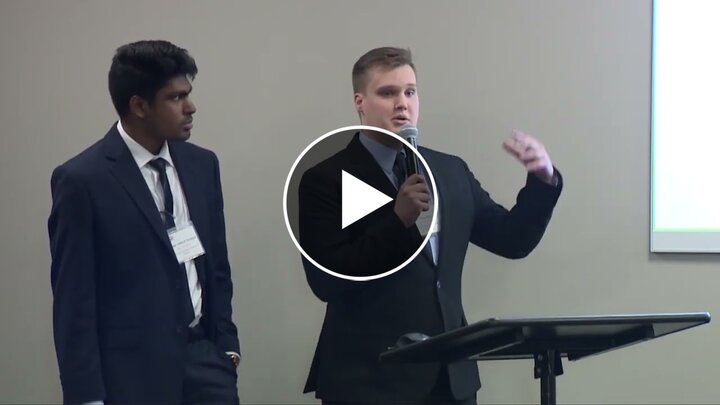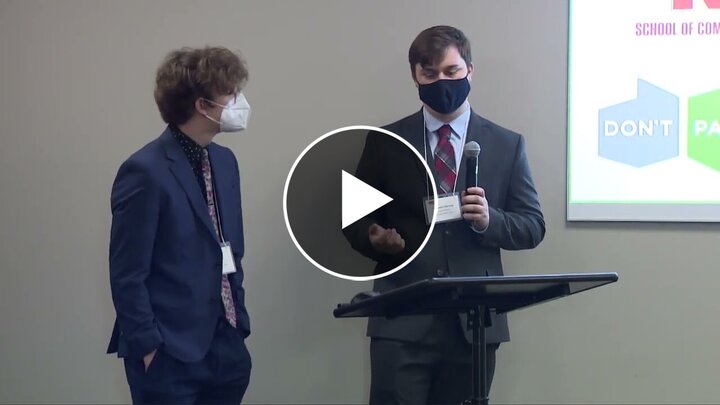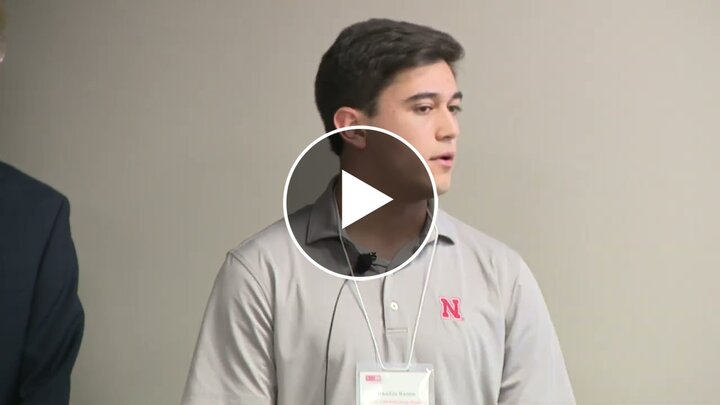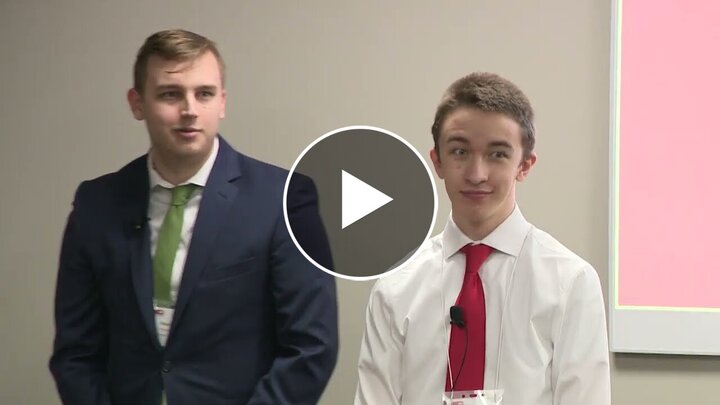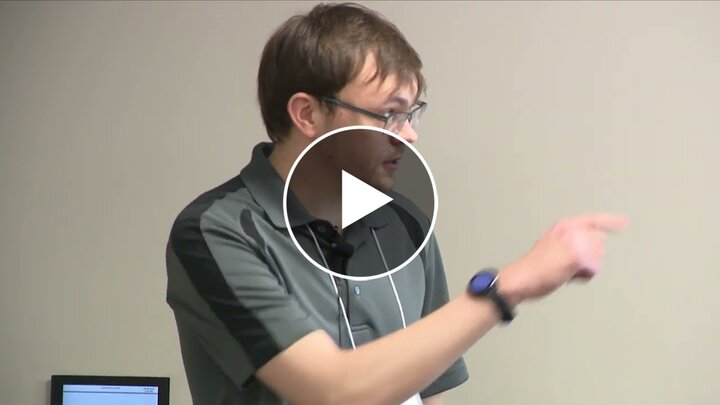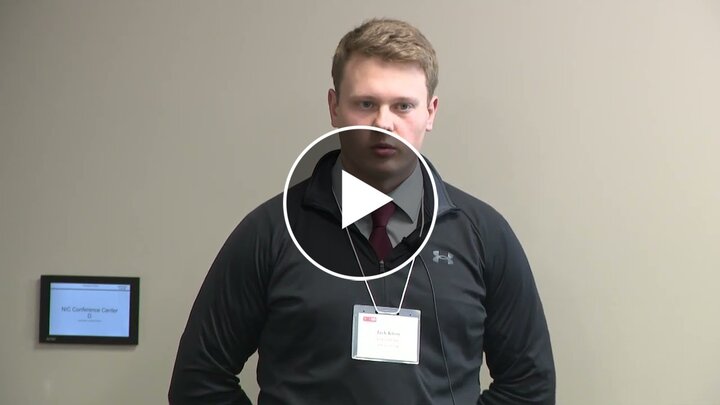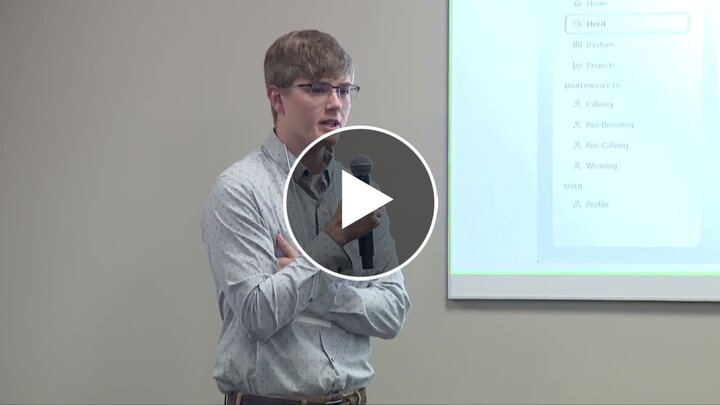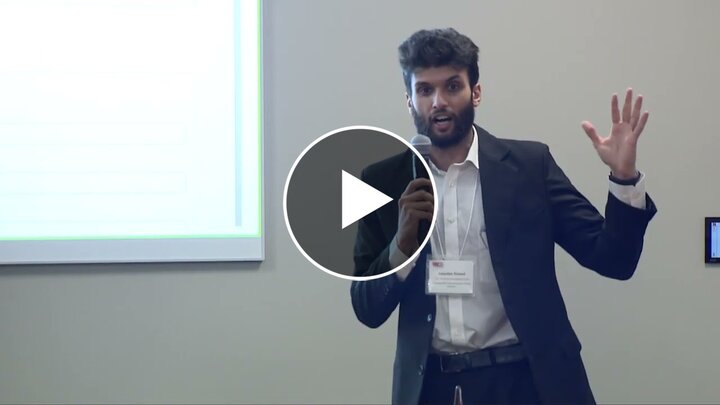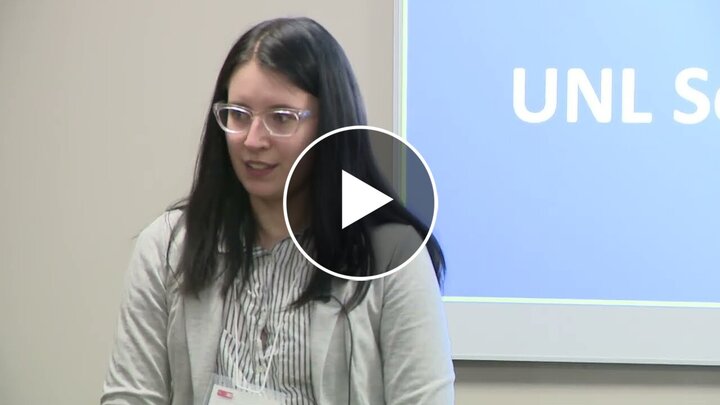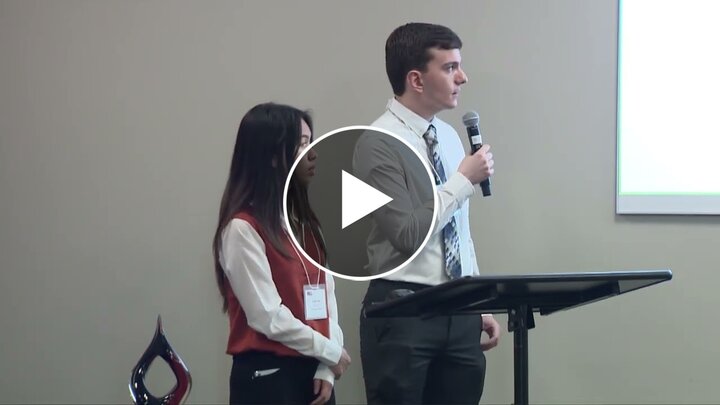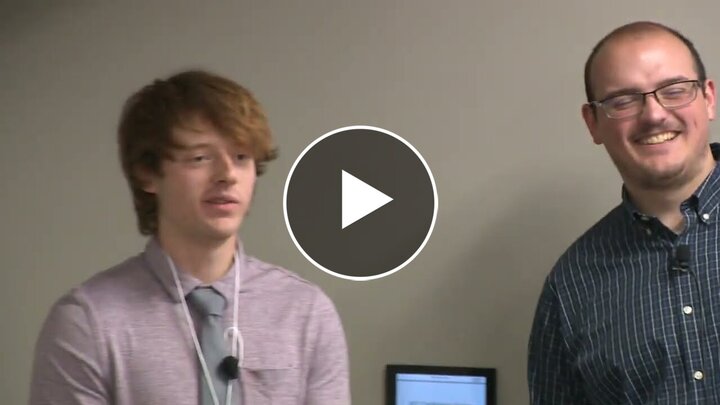2021-22 Senior Design Online Project Showcase
The Senior Design Capstone provides an opportunity for industry and academic sponsors to engage and utilize the minds of some of the brightest students on campus. In the 2021-22 academic year, the Senior Design Capstone is grateful to be supported by the following sponsors.

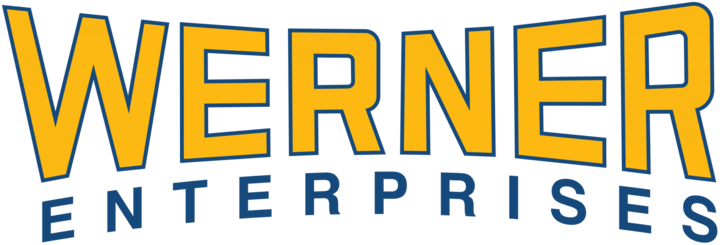
Werner Enterprises
Trailer Tracking and Weather App
The Werner Enterprises is an Omaha-based, international trucking and logistics company with over 8,000 trucks and 24,000 trailers serving North America. The project team created a progressive web application sourcing information from a live database that includes mapping APIs to display trailer locations, and wind, weather and road-condition components for truck drivers’ safety and efficiency, as well as use by other Werner associates. The app has four icons: Map, Wind, Weather, and Trailers. Drivers use the weather tabs to determine safe-driving conditions, plan routes, and decide to continue driving or take shelter. Drivers can also request and be assigned loads using the app. The Trailer and Map tabs allow for overall trailer locations, and specific trailer information including precise latitude and longitude, cargo status, and last moved date.

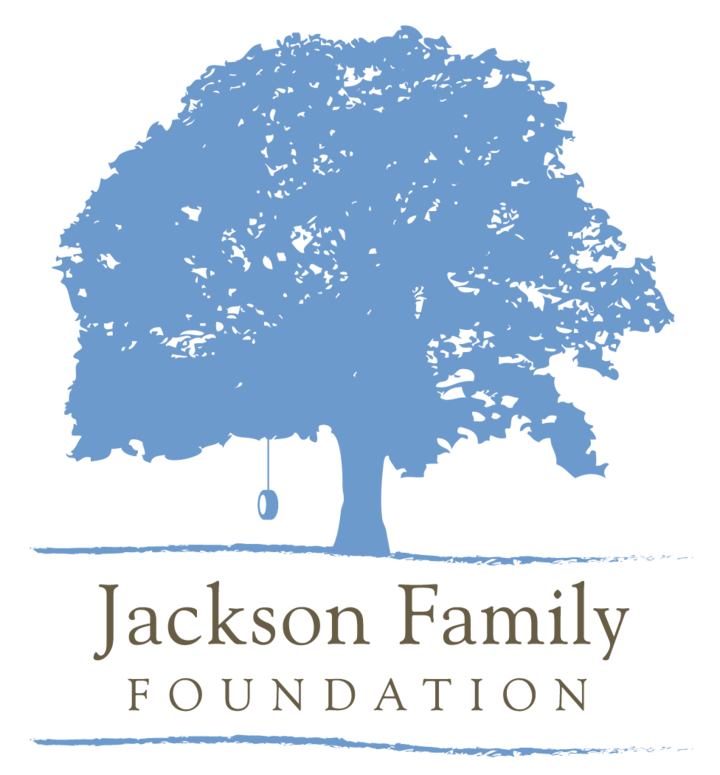
Jackson Family Foundation
Funding Partner Interactive Map
The Jackson Family Foundation interacts with many global partners and actively manages their partnership portfolio. Prior to this project, they did not have a usable interface to support their goals. The Interactive Mapping team developed a Web-based interface that enables the foundation to determine the geographic areas that have sufficient and insufficient partnerships and projects.

Care Bridge
Claims Intelligence Platform
The Care Bridge International project designed a process for training models to predict the future lifetime medical costs of any claimant/patient. Dataset analysis and preparation were important parts of the machine learning-models creation process. The final product was a detailed training process, recommendations, and a series of scripts to train models. Based on research, the team provided recommendations for model architectures and data formatting for optimal performance. The team tested the training scripts locally and on the sponsor’s server to ensure successful sponsor training of their own models with improved data in the future.
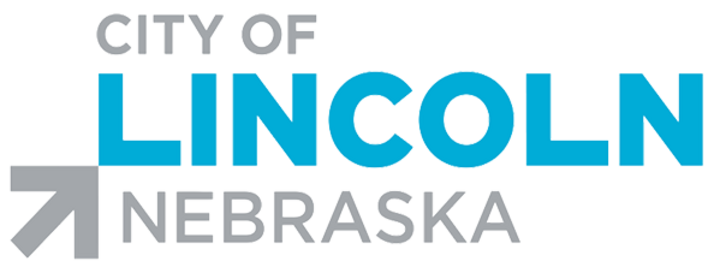
City of Lincoln
Renter & Landlord Community Education Tool
The City of Lincoln and the Nebraska Housing Developers Association team developed of a Web application that digitized the process of eviction-reducing courses. RentWise is a course for renters teaching them how to rent and be a good tenant. The Fair Housing Education is the other course for housing providers to reduce unfair acts and discrimination. Both courses were administered only in-person. The team chose the following technology stack: MEAN (MongoDB, Express, Angular, NodeJS) to create an app that provides these courses in an online environment, increasing accessibility and convenience, while maintaining the same level of education.
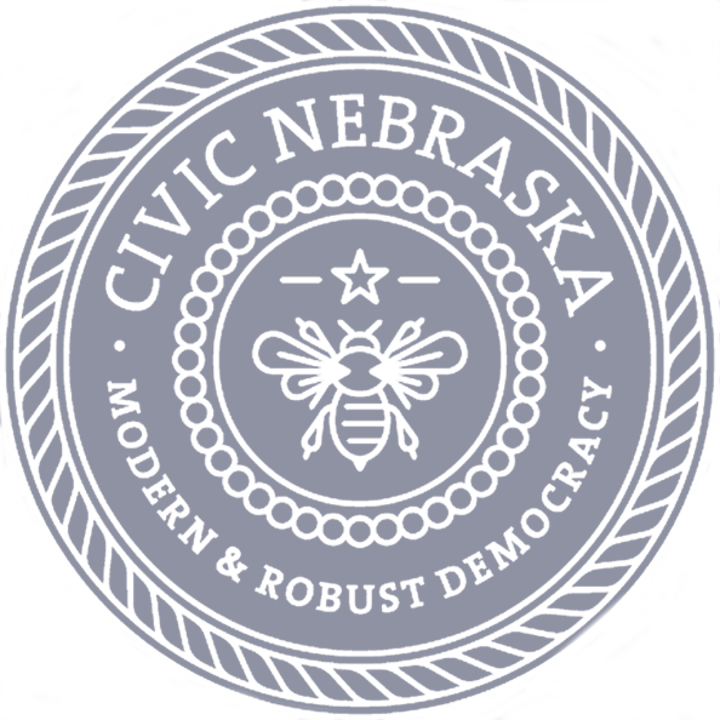
Civic Nebraska
Election Protection Program
The Civic Nebraska Team created a progressive web application for the Election Protection Program that allows authenticated users to fill out three observation forms in a secure, user-friendly manor. The team chose React technology due to its available support. For authentication and authorization, the team utilized Auth0 as it allowed for a third-party authentication that was plug and play. Admin functionality was created with various security levels to add new users, elections, and polling sites.

Connections Homes
Youth Matching Tool
Connections Homes is a nonprofit organization based in Georgia that provides support to youth who have aged out of foster care. Relationship Managers (RMs) manually match these youth with mentoring families that assist them with housing, medical needs or simply a place to go for the holidays. The RM’s comb through a multitude of criteria taking hours to ensure a best match based on similar attributes and beliefs. The project team created a React web application for matching families with youth, using an algorithm with a user interface to display matching results and provide justification scores, thus making the selection process more comprehensive and faster.

DMSi
Reman Mobile App
DMSi is a company heavily involved in the lumber and building materials industry and is focused on providing software solutions to their customers. The project team created a mobile application using React Native for both iOS and Android devices for the remanufacturing (reman) process that DMSi currently offers on their client/server-based ERP application. The reman app eliminates multistep processes, reduces paper usage, and creates an efficient user experience.
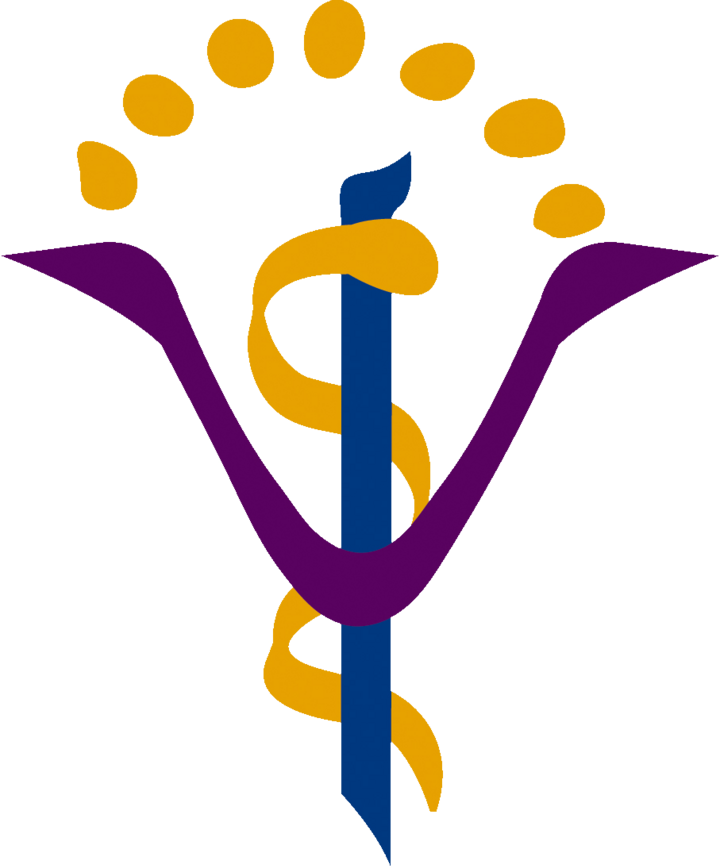
Freeman Preparation Program
FPP App and Institution Integration
Psychologist Dr. Shelley Freeman created a program to change healthcare systems interaction with patients. Research shows that patients who are mentally prepared for medical procedures feel less pain and recover faster. Our Senior Design Team created an interactive, progressive web application using React-JS technology for patients use in gaining psychological pre-surgery skills. This app makes information accessible to all and replaces pamphlets and bureaucratic, hospital mailing. It also allows for medical instruction collaborators to access patient data, responses, and document HIPPA compliance. The business objectives are to market this application directly to consumers, and to collaborate with medical institutions.
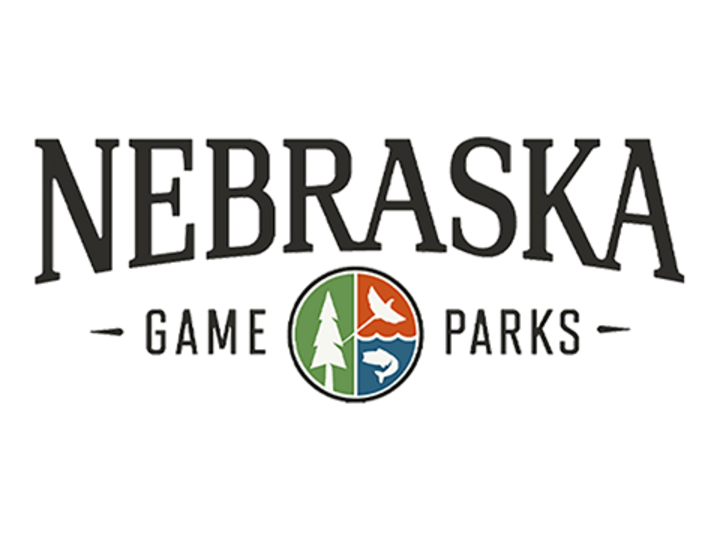
Nebraska Game and Parks
Field App for Fisheries Field Sampling
The Fisheries Division of the Nebraska Game and Parks Commission conducts field sampling of fish populations across the state throughout the year. Biologists, specialists, researchers, and graduate students conduct studies on the collected data, helping the division strike a healthy balance for fish, people, and water quality throughout the state. Previous data collection utilized data sheets, requiring manual input into a 1996 database. The Fisheries Division developed new software to meet industry standards and wanted data collection to match. The sponsors took the project team to Holmes Lake to better understand the process. The team created a tablet-based application to record fisheries data allowing users to capture fish sampling data under chaotic and diverse field conditions. The final product includes multiple cutting-edge elements including light and dark themes for the best viewing experience in any condition.
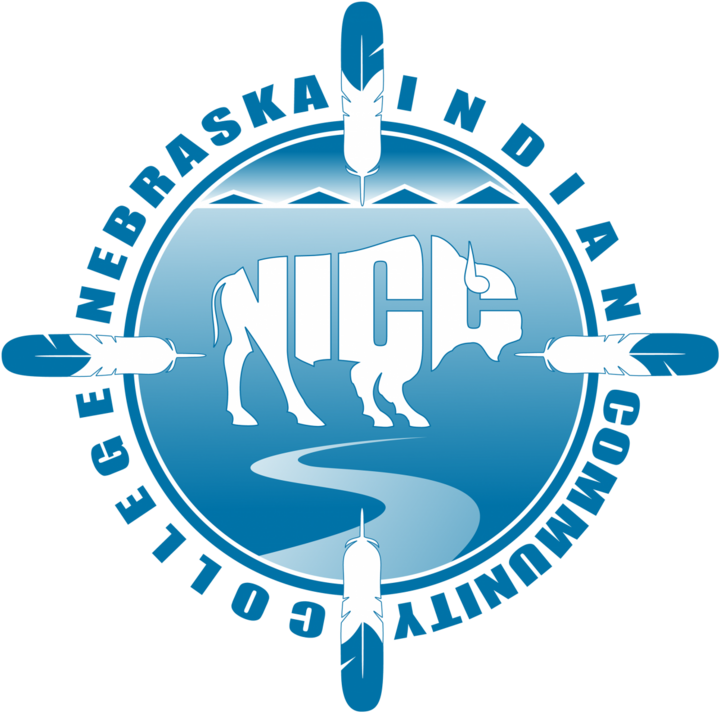
Nebraska Indian Community College
Course Scheduler
The Nebraska Indian Community College (NICC) is a tribal college chartered by two sovereign nations: The Isanti Dakota (Santee) and the Umonhon (Omaha). The current scheduling method is a two-part manual entry process with no database. The project's objective is to develop automated course scheduling software to be integrated with existing in-house systems Empower and Cisco VTC Scheduler with automatic updates across all three platforms. The main goals are: • Automatically populate course offerings based on a two-year course rotation. • Frontload the courses tied to the faculty qualified to teach them. • Utilize scheduling preferences based on the availability of faculty throughout the week. • Collect data on enrollment based on days/times/modalities that the course is offered to analyze future course offerings.
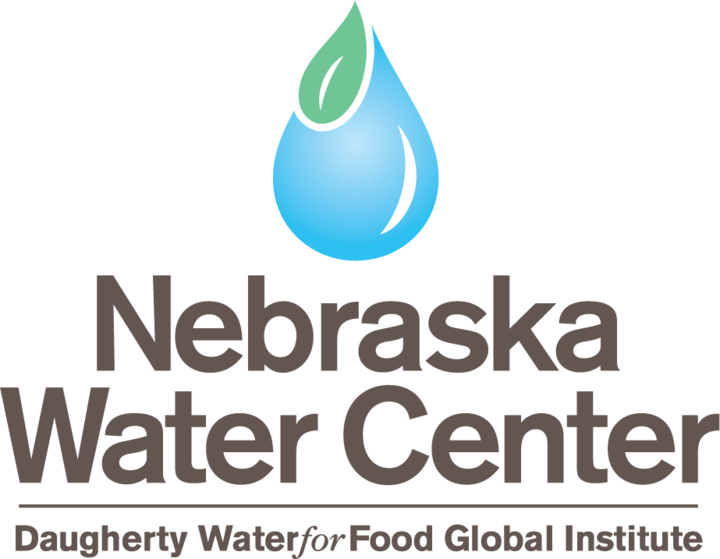
Nebraska Water Center
Vadose Zone Database & User Interface
The Vadose Zone Database and User Interface project team developed a website and database for the Nebraska Water Center (NWC). The database is capable of handling large amounts of soil data, and the website allows for a file upload system for users and administrators, saving the NWC hours replacing a manually inputted system.
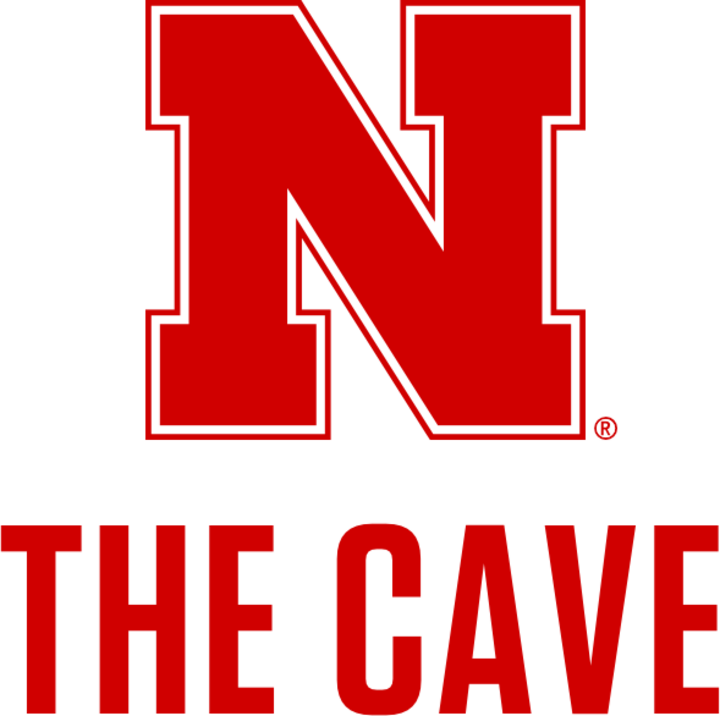
UNL Concussion and Vestibular Evaluation (CAVE) Laboratory
Husker Concussion Mobile Application
Student-athletes who receive care from the UNL CAVE Lab on campus are given a personalized treatment plan geared towards their needs. Recovery results also depend on the athlete’s commitment to doing their prescribed exercises. Last year’s project team created a Web-based application suite for lab staff and athletes to track athletes’ recovery process. For the project’s second year, the team reorganized the system to add new functionality for role-based authentication and to re-align data saving. The team identified more useful data points for the sponsor and completed data exportation features on the Web portal. The team was also able to finish the athlete’s treatment prescription and address some longer-term issues, including security through user permissions.
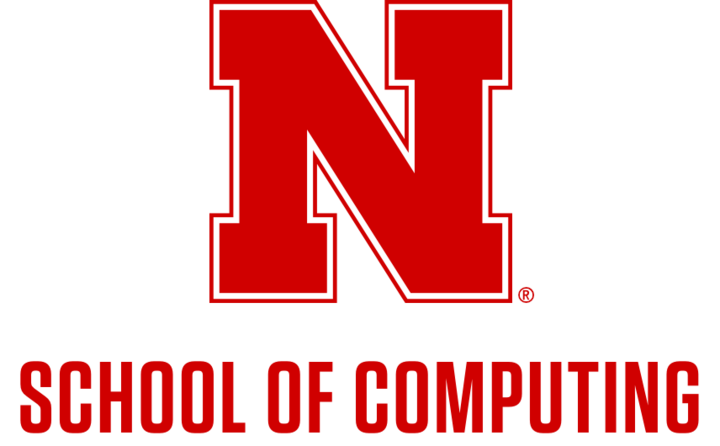
UNL School of Computing - Dr. Chris Bohn
Matching and Grouping of Interests for Capstone (MAGIC)
The UNL School of Computing’s Senior Design team a Web-based application and a database using a merging and sorting algorithm to match students to projects. The previous manual process involved students taking a “Project Preferences” survey where they stack-ranked available projects by choice. With over 100 results to sift through, this presented hours of manual labor within a short turnaround time. This program reduced the original hours of labor to a few seconds.
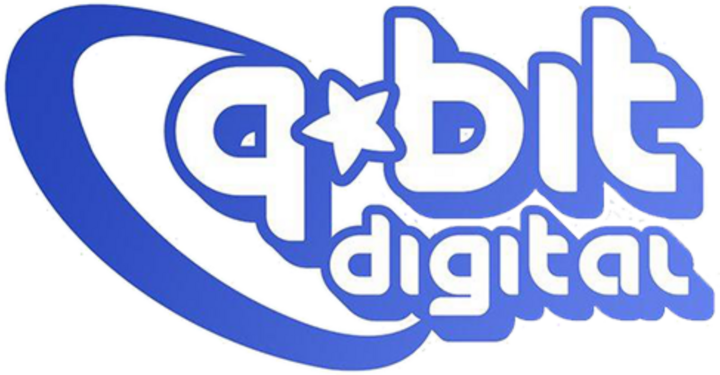
UNL School of Computing Entrepreneurs
Q*bit Digital - Neural Nest
The Q*bit Digital Entrepreneurial team created a 30-minute, playable demo of a game, “Neural Nest”, that they released on the Steam game store and are presenting to publishers. The game is a mover shooter experience incorporating themes of Machine Learning (ML) and transhumanism, a surreal, hand-drawn environment, wingsuit-like flight mechanics, and nonlinear, adventure-based gameplay. The game was brought to life through surreal enemies with human-like features, and levels making the player feel disoriented. The team trained a generative adversarial network (GAN) to create the game’s title screen video.

UNL School of Computing - Dr. Chris Bourke
Project 046
This Project 046 was a combined SoC Team with a CEMA Johnny Carson Center for Emerging Media Arts Team that collaborated to create a psychological horror themed 3D Video Game. The teams designed how the game should look, feel, and what events should take place. The CEMA team provided the developers with level layouts, assets, animations, sound files, and cutscenes to be integrated into the project. The game follows the journey of a scientist waking up to find themselves trapped in a mysterious, rundown facility. The doors are completely blocked, and they quickly discover that the only way forward is to go deeper. Throughout the facility, a strange creature toys with the scientist as they attempt to find a way out.

UNL School of Computing - Jeff Falkinburg and Charles Daniel
Husker Scope
The team built an app for iOS and Android that implements a Channel Function Generator and Oscilloscope functionality for use within the CSCE 436 Advanced Embedded Systems and other Engineering courses. They used a JavaScript library to produce different sound waves of varying frequencies. With frequencies from 20 Hz to 20 KHz, the app produces four different sound waves, sine, triangle, square, and sawtooth and changes the amplitude and phase of the waveform. Using the left and right channel of the mobile device’s audio output, they produced and manipulated the two separate waveforms. The components of the oscilloscope consisted of wave visualization, trigger manipulation, cursors for measurements, autoset, voltage and time division manipulation, pausing the graph, and the ability to export the data coming into the oscilloscope as a csv file.

UNL School of Computing - Jeff Falkinburg and Brittney Palmer
Husker STEM VR
The Senior Design Team created an Oculus Quest app that will be used for outreach and recruitment of STEM majors at UNL. The team creating a virtual world STEM outreach-focused game experience focused in and around Memorial Stadium. The focus is on the three SoC majors currently provided: Computer Science, Computer Engineering, and Software Engineering. The STEM VR tour starts in Memorial Stadium’s East Lobby, where users can read about each major and view videos relating to the School of Computing. From there, they can enter a portal taking them to an activity relating to each major. Each activity asks the user to use a Scratch-like visual block coding system to complete a certain task or some challenging escape room activity that focuses on unique features of each major, ultimately encouraging the user to pursue a STEM degree at UNL.

UNL School of Computing - Dr. Ann Koopmann and Dr. Ashok Samal
Learning Assistant Program Management Tool
The UNL Learning Assistant Program (LAP) has a staff of 40-50 undergraduate students to support over 500 students each semester with peer learning in multiple first-year computer science courses. The program requires recruitment, hiring, retention, status tracking, and evaluations management. The project team expanded upon last year’s application and database, LAProMT, by creating additional features to support an automated evaluation system. The system consolidated multiple functionalities into LAProMT, streamlining the operation of the Learning Assistant Program.

UNL School of Computing - Dr. Mehmet Can Vuran
OneLNK - A Link to Rule All Radios
UNL and the City of Lincoln, as part of a Smart Gigabit Communities (SGC) public-private partnership project developed and deployed a city-wide experimental wireless network platform across UNL rooftops, city traffic intersections, and rural agricultural fields, called iLNK. The Senior Design project team created OneLNK, a software-defined radio system where researchers can run a variety of experiments on wireless testbeds and a health-check for radios to concurrently run with the experiments. The system was broken into two main components: an AWS EC2 instance that hosted the OneLNK website, and the OneLNK Radio Network which handled radio management services. The AWS IoT Core MQTT Broker handles configurations and displays charts and graphs created from health check data using AWS CloudWatch.

UNL School of Computing - Dr. Qiuming Yao
A New pyP3DB
In the area of bioinformatics, web services and online databases play a significant role for scientists to store and query biological data. Bioinformatic websites are great platforms of open-science and reproducible research. The UNL Yao Lab developed and maintained the Plant Protein Phosphorylation Database, P3DB, recognized worldwide by plant scientists, that has become a significant resource for studying plant proteins and their modifications. This project team redesigned and built a Python-based website framework for protein modification data. The main renovation was redesigned and generalized to host and display data sets in a more flexible, comprehensive, and secure way, called pyP3DB.
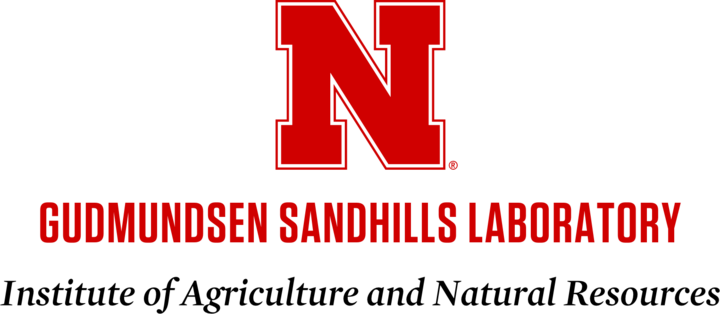
UNL Gudmundsen Sandhills Laboratory
Livestock Data Analytics
The team created a cloud-based cattle livestock management and visualization Web application solution using Amazon Web Services (AWS) for the Gudmundsen Sandhills Laboratory (GSL), a university research facility. The GSL focuses projects on range livestock nutrition and beef cattle production. Their research technicians needed a solution for searching, sorting, and organizing animals into groups and visualizing large amounts of animal data. The GSL also conducts experiments measuring beef cattle characteristics. Prior to the web app, GSL managed animals and data with an inefficient, non-scalable Microsoft Excel solution, making analysis and aggregation difficult. The team’s web-app solution is efficient, has low latency and limited downtime, allowing GSL constant data access.
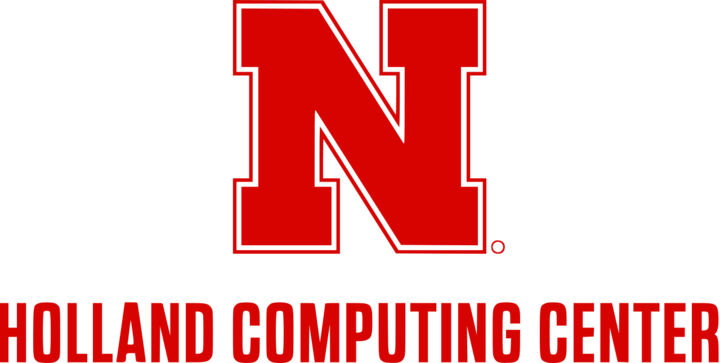
UNL Holland Computing Center (HCC)
Enhancing RNA Nanostructures Science Gateway
In 2020-2021, HCC sponsored a senior design project team to design, develop, implement, and deploy a comprehensive science gateway for the design and optimization of RNA nanostructures powered by RNAMake. The resulting RNAMake gateway was designed with the Airavata gateway framework, supporting RNA design applications running on high-performance computing centers. This year’s team evaluated the existing RNAMake gateway frontend and enhanced it by improving the user experience and supporting more applications in RNA design using React-JS.
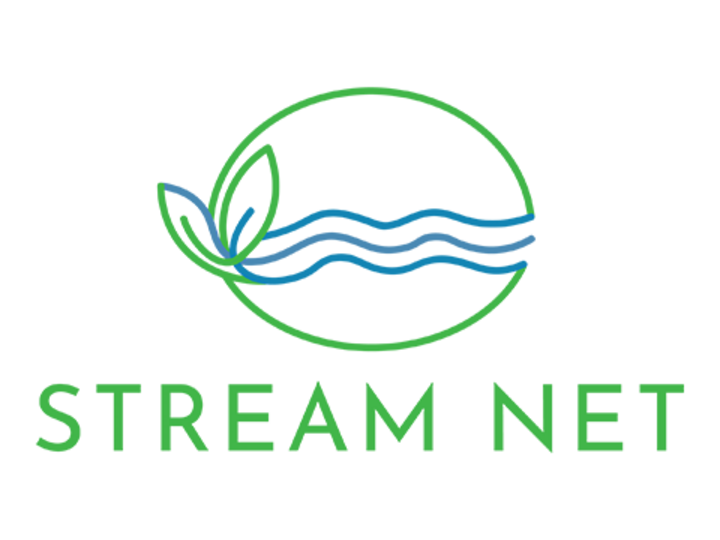
UNL School of Natural Resources
StreamNet
StreamNet was a continuation project from the 2020-2021 Senior Design program. Last year’s team created an application to aggregate data from sensors across Nebraska and display the data on a Web page. This year’s team securely connected the sensors to the application server to pull in real-time data to the site, focusing on improving the user experience in terms of viewing and interpreting the data. The team also made improvements to the admin page to give admins more options, such as managing banners on the “Charts” page.

UNL Testing Ag Performance Solutions (TAPS)
Streamlining TAPS Data
The University of Nebraska–Lincoln’s Testing Ag Performance Solutions (TAPS) program was started as a new way to engage agricultural producers. The TAPS program is a unique farm management competition that promotes profitability and efficiency through peer-to-peer interaction. Participants are responsible for making input decisions including hybrid selection and seeding rate, irrigation, insurance selection, marketing strategy, and nitrogen fertilizer management. The data is stored and input manually into Excel files. The project team created a streamlined, automated process for recording submitted decision data into the Excel files for the competitions, using a SQL database.
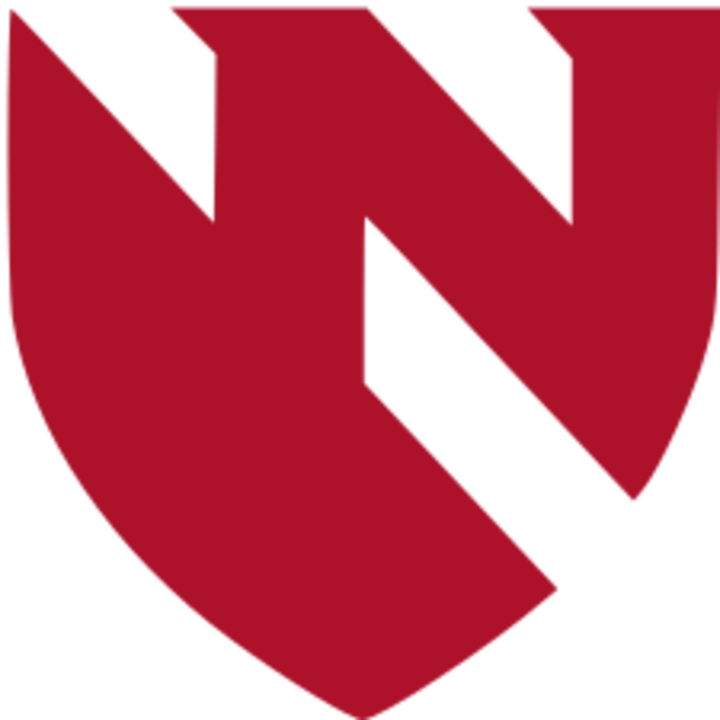
University of Nebraska Medical Center College of Nursing
VR Ag Safety Continuation
Workers in the Agricultural industry suffer thousands of injuries and hundreds of deaths every year. Teaching safety in these three areas (tractor, ATV, and electrical) is important for creating safer farmers in the future. Last year, the Senior Design team created an ag-safety virtual reality training tool, “Rollover Ranch”, built to run on Oculus Quests for the University of Nebraska Medical Center’s College of Nursing (UNMC) curriculum, enhancing the lecture format to include a more hands-on experience. This year’s project team expanded upon the game by adding ATV and electrical safety components. The game has eight different objectives that the player can choose from involving tractor and ATV tasks without rolling or flipping the vehicles. Objectives involving electrical safety have players transporting large equipment around power lines or digging around underground power lines. The game will be taken around the Midwest to conferences to educate agricultural workers and school children.
